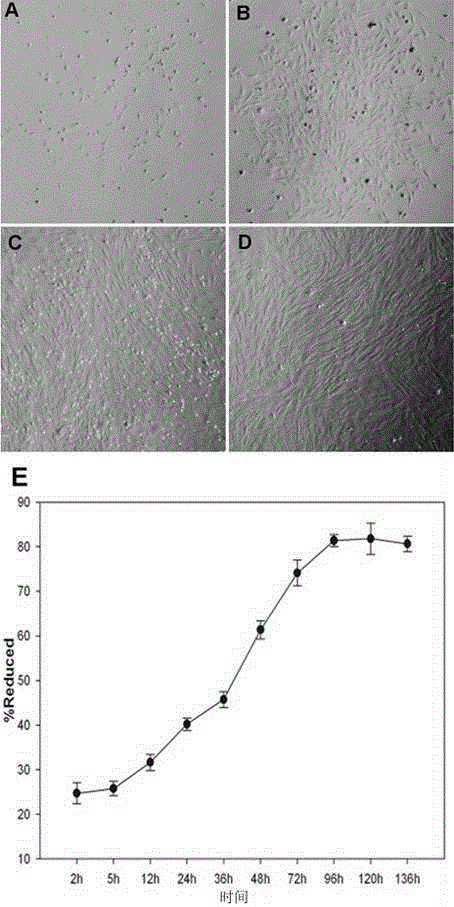Method for improving in-vitro development efficiency of porcine cloned embryos
A high-efficiency technology for cloning embryos, applied in the field of reproduction or insemination, can solve the problems of low in vitro development efficiency of pig cloned embryos, and achieve the effects of increasing the number of cells at the blastocyst stage, high blastocyst rate, and increasing the division rate
- Summary
- Abstract
- Description
- Claims
- Application Information
AI Technical Summary
Problems solved by technology
Method used
Image
Examples
Embodiment 1
[0032] 1. Materials
[0033] αMEM culture medium was purchased from Life Technologies; reagents were purchased from sigma; antibodies were purchased from eBioscience; plasmids pLv-CMV-ZsGreen-hOct4 (O, carrying human Oct4 gene sequence, Genbank: NM_002701.4), pLv-CMV-ZsGreen -hKlf4 (K, carrying human Klf4 gene sequence, Genbank: NM_004235.4), pLv-CMV-ZsGreen-hc-Myc (M, carrying human c-Myc gene sequence, Genbank: NM_002467.4), pLv-CMV-ZsGreen -hLin28 (L, carrying human Lin28 gene sequence, Genbank: NM_024674.4), pLv-CMV-ZsGreen-hNanog (N, carrying human Nanog gene sequence, Genbank: NM_024865.2), pLv-CMV-ZsGreen-hSox2 (S , carrying the human Sox2 gene sequence, Genbank: NM_003106.3) was preserved by the Animal Genetic Engineering Laboratory of the School of Life Sciences, Sun Yat-sen University.
[0034] Two, test procedure: the whole flow diagram of the present invention sees as figure 1 shown.
[0035] S1. Isolation and purification of bone marrow mesench...
PUM
 Login to View More
Login to View More Abstract
Description
Claims
Application Information
 Login to View More
Login to View More - R&D
- Intellectual Property
- Life Sciences
- Materials
- Tech Scout
- Unparalleled Data Quality
- Higher Quality Content
- 60% Fewer Hallucinations
Browse by: Latest US Patents, China's latest patents, Technical Efficacy Thesaurus, Application Domain, Technology Topic, Popular Technical Reports.
© 2025 PatSnap. All rights reserved.Legal|Privacy policy|Modern Slavery Act Transparency Statement|Sitemap|About US| Contact US: help@patsnap.com



